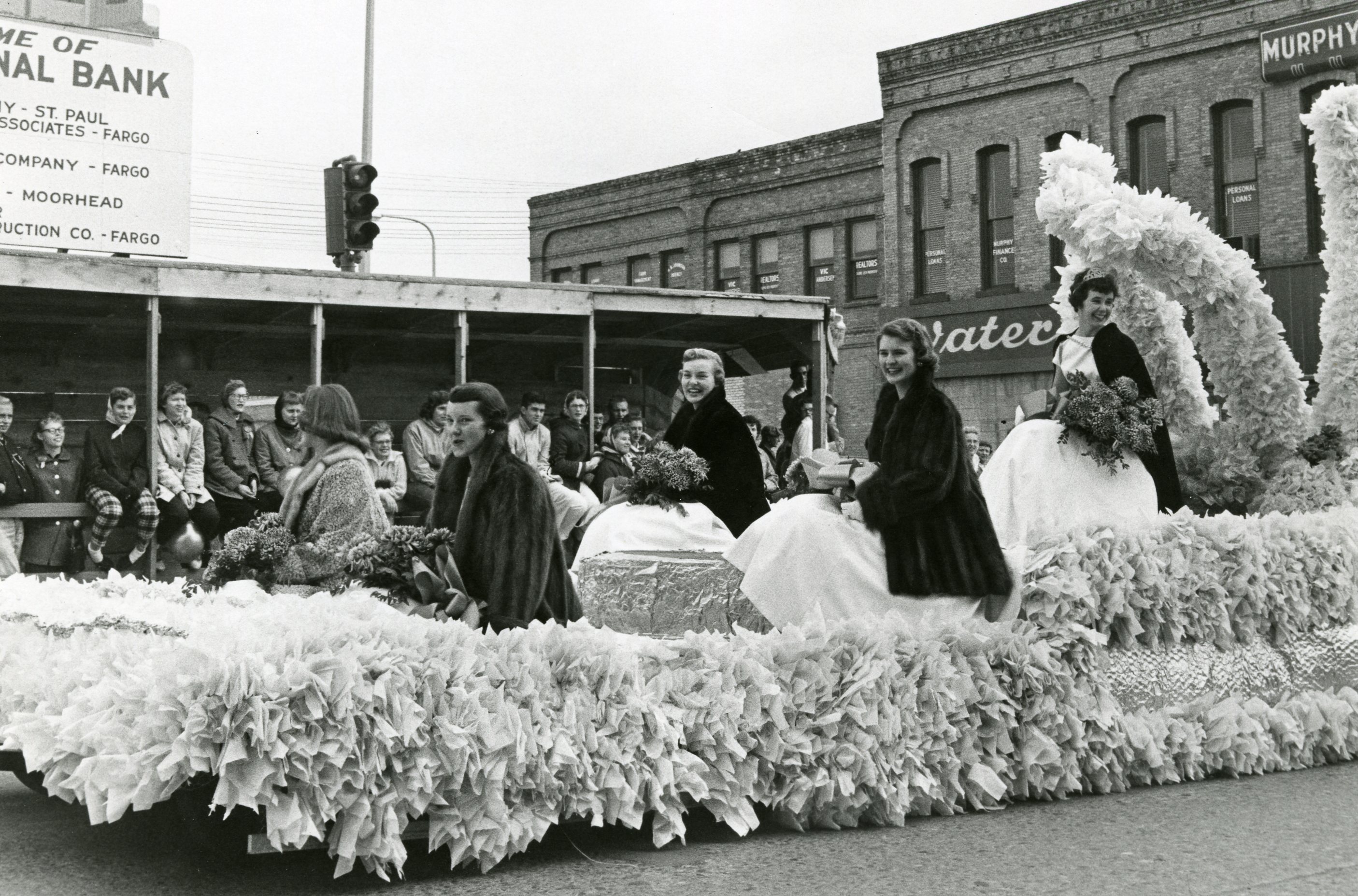Homecoming Queen Tradition
 Concordia’s tradition of crowning a homecoming queen began in the 1920s. Student movements and the influence of the 1960-70s society affected the practice. Due to student concerns, the 1974 Homecoming Chairperson Ken Fitzer substituted the tradition of voting for a homecoming queen with the Don Awards, which was a recognition given to four exemplary senior students. The current practice of crowning both a king and queen began during the homecoming festivities in 1977.
Concordia’s tradition of crowning a homecoming queen began in the 1920s. Student movements and the influence of the 1960-70s society affected the practice. Due to student concerns, the 1974 Homecoming Chairperson Ken Fitzer substituted the tradition of voting for a homecoming queen with the Don Awards, which was a recognition given to four exemplary senior students. The current practice of crowning both a king and queen began during the homecoming festivities in 1977.
Beginning with Valborg Bjornson in 1926, the college has seen homecoming queens every year, with the exceptions of 1974-1976. [1] Homecoming festivities in the mid-1970s included a different type of royalty.
The 1960s-1970s was a time when many groups of college students across the nation organized to voice concerns and worked to change campus policies. [2] Concordia’s Women’s Awareness Association was the first to begin the movement for removing the homecoming queen tradition. The group, which brought speakers, panels, and more to promote freedom and individuality, questioned the homecoming queen tradition on the grounds that it promoted gender stereotypes. [3] Perhaps in response to their concern, Ken Fitzer, the 1974 homecoming chair, made the decision to forego selecting a homecoming queen that year. According to Fitzer, an added influence was the voice of previous candidates who expressed feelings of embarrassment and objectification at “being paraded about a huge auditorium.” [4]
Rather than completely eliminate the process of honoring exemplary senior students, Fitzer instead began the Don Awards, initially called the Who’s Now awards, presented to four elected senior students chosen by “their contributions to the college community, leadership and scholastic ability, personality, diversity, and individuality.” [5] President Knutson suggested naming the award “don,” meaning a significant person. [6] The 1975 Don Awards were given to Carolyn Anderson, Sherman Bishop, Chris Cuppet, and Lee Warner. [7]
By implementing the Don Awards, Fitzer was hoping for a number of things. First, he was hoping to remove a tradition from the college that was considered to be sexist. The 1970s was a time of second wave feminism, and Concordia’s campus was no exception to the societal quest for equality.
Secondly, Fitzer enacted the change in this homecoming tradition due to student feedback. Prior to 1974, the college would pay for the queen candidates’ dresses, and many students felt like the money put towards the candidates’ attire would be put to better use as a scholarship for the nominated students. [8] Rather than presenting them with a scholarship, however, the Don Award winners were presented with a plaque and fifty dollars to donate to a charity of their choice. [9]
The concept of the Don Awards continued until 1977 when the College transitioned into its current model of voting for a homecoming queen and a king. That year Rose Pierson and Nate Hanson were elected as the first queen/king duo. [10]
Authors: Jazzy Lara and Hans Frank
Footnotes
[1] "Homecoming Royalty," Concordia College Archives, Accessed Apr. 24, 2016, http://concordiacollegearchives.weebly.com/concordia-quick-facts.html.
[2] John R. Thelin, A History of American Higher Education (Baltimore: John Hopkins University Press, 2004), 327.
[3] Carroll L. Engelhardt, On Firm Foundation Grounded (Moorhead, MN: Concordia College, 1991), 277.
[4] Susan Gross, "Queenless Homecoming CC First," Concordian, Sept. 6, 1974, 1.
[5] Leslie Erickson. "Homecoming King and Queen Tradition Halted in Mid-1970s." Concordian, Oct. 2, 1992, 12.
[6] “Homecoming Itinerary Vast and Action-Packed,” Concordian, Sep. 20, 1974, 4.
[7] Cobber Yearbook (Moorhead: Concordia College, 1976), 185.
[8] Leslie Erickson, "Homecoming King and Queen Tradition Halted in Mid-1970s."
[9] Lezlee Lord, "Don Awards Prospectives," Concordian, October 1, 1976, 4.
[10] “Homecoming Royalty,” Concordia College Archives.